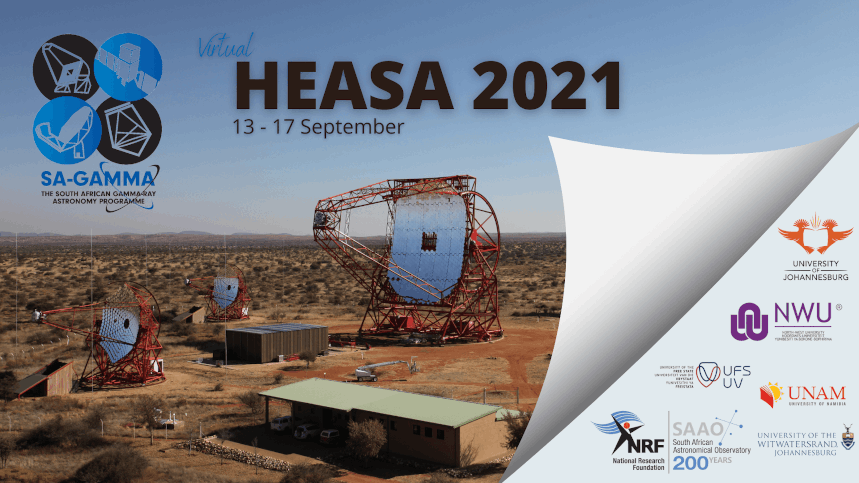
online
published May 30, 2022
HEASA 2021 was the eighth conference in the annual series "High Energy Astrophysics in Southern Africa". Its goal was to bring together scientists from the southern African region, the African continent, and around the world with an interest in high-energy astrophysical phenomena. Topics discussed included theoretical, multi-wavelength, and multi-messenger observational aspects of astrophysical sources (e.g. active galactic nuclei (AGNs), galaxy systems, gamma-ray bursts (GRBs), X-ray/gamma-ray binaries, supernovae and supernova remnants, neutron stars, pulsars and pulsar wind nebulae, cataclysmic variables (CVs)) as well as modern aspects of astro-particle physics. HEASA 2021 was held during the period of 13-17 September, as an online conference with half-day sessions. In addition to invited, contributed, and poster presentations, recent Ph.D. graduates (Ph.D. thesis submitted after August 2019) may present an extended dissertation talk.
Editorial Board
- Michael Backes
University of Namibia, Department of Physics, Private Bag 13301, Windhoek 10005, Namibia - Markus Böttcher
North-West University, Potchefstroom - David Buckley
SAAO/UCT/UFS - Andrew Chen
Wits, South Africa - Pieter Meintjes
- Soebur Razzaque
U Johannesburg

| Sessions |
|---|
| Session: Active Galactic Nuclei |
| Session: X-ray Binaries |
| Session: Multi-Messenger and Astro-Particle |
| Session: Pulsars |
| Session: Posters |
| Session: Active Galactic Nuclei |
|---|
|
Comprehensive power spectral density analysis of the Fermi-LAT gamma-ray light curves of selected blazars
|
|
Optical Spectropolarimetry Observations of the BL Lac-type object PKS 0537-441 after a period of quiescence
|
|
RX J0818.2+0122 - an AGN with an unusually broad Keplerian rotator line profile
|
|
A study of the lobes of the radio galaxy Hydra A using MeerKAT observations
|
| Session: X-ray Binaries |
|
A decade of black hole X-ray binary transients
|
|
Considering the importance of gamma-gamma absorption in gamma-ray binaries
|
|
Hercules X-1 (Her X-1): New results from the past decade of observations
|
| Session: Pulsars |
|
Modeling globular clusters as multi-wavelength emitters
|
|
Low power pulsed emission at the spin period of the white dwarf in AR Scorpii?
|
|
The detection of pulsed emission at the spin period of the white dwarf in AE Aquarii in MeerKAT and Fermi-LAT data
|
|
Pulsar high-energy emission models
|
| Session: Posters |
|
Spectral analysis of S5 1803+784 in the recent flaring state
|
|
Development of tools for SALT/RSS spectropolarimetry reductions: application to the blazar 3C279
|
|
Results from the O3 observing run of the LIGO/VIRGO collaboration
|
